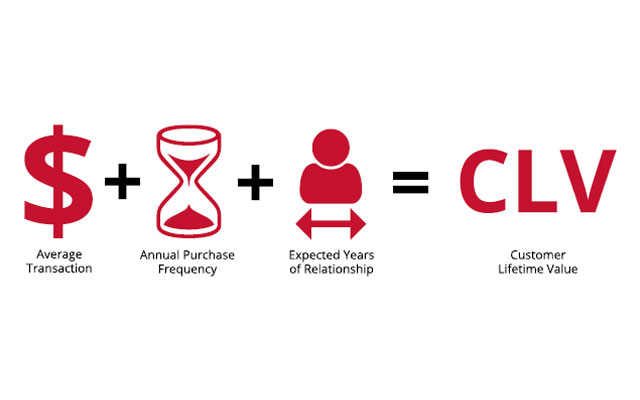Estimating the Lifetime Value of your Customer Base
Author – Author – Dhruv Walia, Lead Data Strategist at DecisionTree Analytics

Over the past decade, the rise of the digital age has led businesses to search for the 'one' performance metrics that encapsulates the performance of their marketing spend. Click through Rate, or CTR has found favor among most organizations, which captures the clicks an organization can solicit for an impression.
Evaluation of marketing spends through CTR/ ROAS has its limitations; these do not capture the future value of each customer, just the value of the first purchase. Customer Lifetime Value (CLV) is a much better indicator of the current and future success of a business. CLV can be defined as the discounted value a customer contributes over his entire association with the business.
Data Cleaning and Feature Creation: First-party marketing data resides in online—site, search, social, and mobile campaign data—and offline sources (CRM, PoS, and direct mail lists) as well. Companies also source third-party data to increase the scope of their target audience. With so much data, marketers will have their task cut out to clean the data and use techniques such as Classification models to break down the raw data into meaningful subsets, and Regression Models to identify trends and make predictions.
Lifetime Value Modeling
Calculating LTV has its share of nuances; it becomes important to incorporate variables that allow a true representation of the customer's value to the business. Two approaches exist for determining the LTV:
- Deterministic Models: Using variables such as revenue, costs, frequency we arrive at an estimate.
- Probabilistic Models: Modeling the probability of churn and probability of purchase by a customer and leveraging these probabilities to forecast the LTV.
Deterministic Models:
Approaches that involve calculating the net present value of the profits of a specific customer once the customer has been acquired, after subtracting incremental costs associated with marketing, selling, production and servicing over the customer's lifetime, are called deterministic models.
Apart from expected revenue, cost of relationship maintenance and discount rate, variables like the churn rate can be incorporated to improve the LTV estimates
A RFM model which segments the customer base and calculate the churn rates separately for each segment can be used instead of a universal churn rate; this would give a better representation of the customer behavior.
Probabilistic Models:
One issue that must be noted is that of "censorship". Censorship is the fact that we have incomplete data when dealing with existing customers we are unaware of when they will churn or purchase in the future. Probabilistic models such as the survival function and hazard function can be used to estimate these probabilities and further use it to estimate the LTV.
We can also utilize all the characteristics representative of the customer such as the frequency, recency, revenue and so on in a survival regression model. This model is able to tackle the issue of dealing with censored data.
The deterministic LTV model does not provide us with much flexibility when it comes to complex customer journeys with multiple states such as acquisition, maximization, and churn/retention. After defining the customer states based on their behavior, a Markov model allows us to measure the probability of transition from one state to another for each customer. For example, if recency is an important metric, we may find the probability a customer who made a purchase last month will repurchase next month is 0.8. In other words, for each state we can then assign a probability that the customer will make a purchase (P) based on their present state (j) is 1 – Pj and Pj is the probability that they will drop to the next state (make no purchase).
Advantages of LTV
Customer lifetime value is one of the most important metrics for a retailer.
- ROI based channel evaluation: Consider lifetime value of a customer as a means to understand the value different acquisition channels bring to the business. Evaluate if the spends on certain campaigns/channels are justified and further optimize to attract the best customers.
- Enhance your marketing strategy: Tailor campaigns based on the customer LTV. Customers with a high LTV might exhibit a similar purchase behavior and should be targeted accordingly. Use these customer segments to identify purchase paths and set up triggers to incite purchases.

